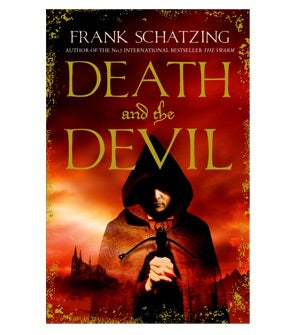Death and the Devil, By Frank Schätzing
A fresh whiff of Cologne

Your support helps us to tell the story
From reproductive rights to climate change to Big Tech, The Independent is on the ground when the story is developing. Whether it's investigating the financials of Elon Musk's pro-Trump PAC or producing our latest documentary, 'The A Word', which shines a light on the American women fighting for reproductive rights, we know how important it is to parse out the facts from the messaging.
At such a critical moment in US history, we need reporters on the ground. Your donation allows us to keep sending journalists to speak to both sides of the story.
The Independent is trusted by Americans across the entire political spectrum. And unlike many other quality news outlets, we choose not to lock Americans out of our reporting and analysis with paywalls. We believe quality journalism should be available to everyone, paid for by those who can afford it.
Your support makes all the difference.Frank Schätzing was well-known in Germany for his historical novels before he achieved international recognition with his ecological thriller, The Swarm. Death and the Devil is a medieval mystery, set in 13th-century Cologne. In the shadow of the cathedral, still under construction, Jacob the Fox, a beggar conspicuous by his red hair, has the ill-luck to espy a murder – and the murderer spies him.
There follows a game of cat-and-mouse through the city, from its markets to its middens, as Jacob is pursued by an assassin armed with a strange crossbow. The chase creates a colourful picture of medieval city life, taking us into some dangerous places, including a leper colony.
As in all the best medieval romances, a beautiful young woman comes to Jacob's aid. But the unheroic Fox becomes involved in a vicious political imbroglio. The death he witnessed was that of the architect of the cathedral, and the incident merely one stage in a bitter conflict between church and state. The Archbishop of Cologne is locked in a power-struggle with rich patrician families, and neither side has scruples; they use any means to gain their ends.
The book, translated by Mike Mitchell, rises well above the level of most historical mysteries by its inclusion of the religious debates of the time. It is hard now for us to visualise the theological climate in which matters such as the nature of sin were discussed as keenly as football today, but this intellectual atmosphere is vividly brought to life.
In another respect, we might find identification easier: this is a society suffering from the effects of foreign conflict. Old Crusaders with post-traumatic stress disorders, the effects of horrible sights in foreign countries, are stalking the land. How might they be serving the lofty burghers of the city? The hunts around stinking alleys and rich mansions are well done, deeply enriched by historical research, and the setting a freshly enjoyable one for the UK reader – though there is an entertaining British connection at the end.
Join our commenting forum
Join thought-provoking conversations, follow other Independent readers and see their replies
Comments